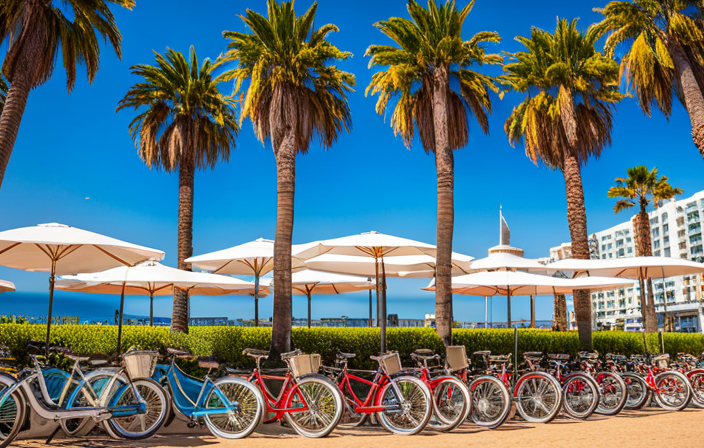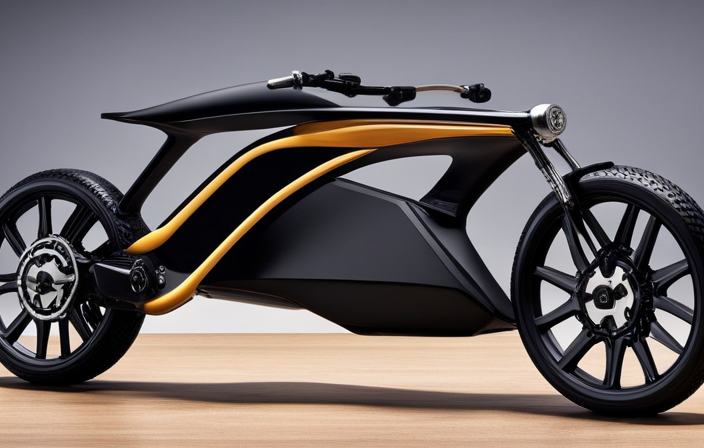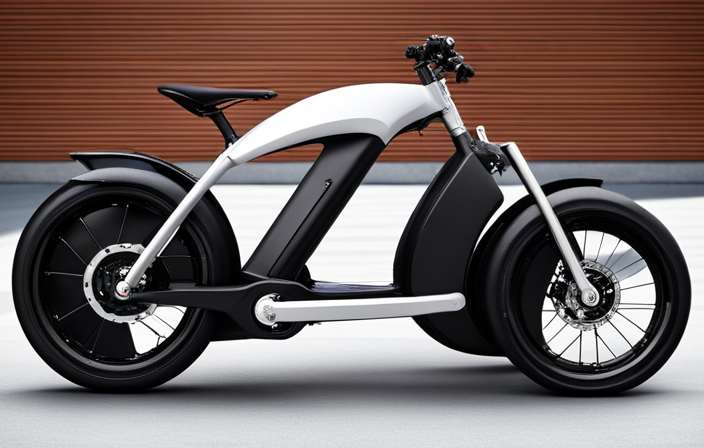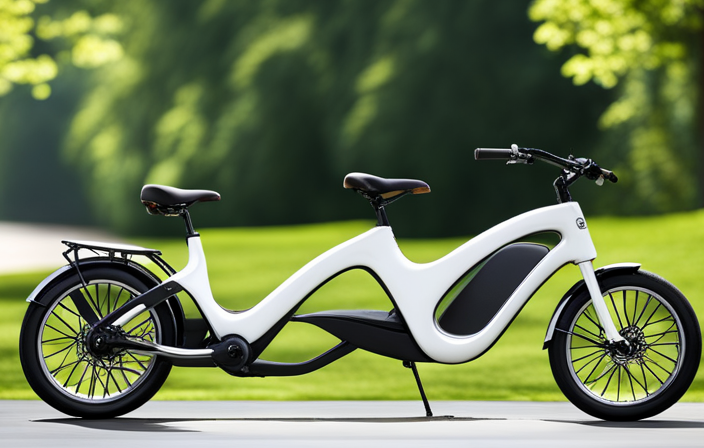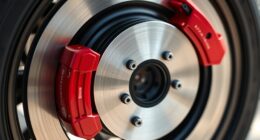Imagine you’re out on a thrilling dirt bike adventure, when suddenly your electric start dirt bike gets flooded. Don’t panic! In this step-by-step guide, we will show you how to fix it.
By following these instructions, you’ll be back on the track in no time.
- Assess the damage.
- Disconnect the battery.
- Remove the spark plug.
- Drain the fuel.
- Clean the carburetor.
- Dry the electrical components.
- Replace the spark plug.
- Refill with fresh fuel.
- Finally, test and start the bike.
Let’s get started!
Key Takeaways
- Check the spark plug and air filter for any signs of wetness or fouling
- Clean or replace the spark plug if necessary
- Ensure a proper fuel and air mixture by verifying the fuel tank handle and clean air filter
- Hold the throttle firmly but not too tightly and press the electric start button on the handlebar to avoid flooding the engine.
Assess the Damage
First, check to see if any water got into the engine. Start by removing the spark plug and inspecting it for signs of water. If you notice any moisture or corrosion, this indicates that water has indeed entered the engine.
Next, carefully drain any water from the engine by turning the bike upside down and allowing any excess water to flow out. Once the water has been drained, dry the engine thoroughly using compressed air or a clean cloth. It is important to ensure that all components are completely dry before moving on to the next step.
With the engine now assessed, it is time to disconnect the battery to prevent any electrical damage.
Disconnect the Battery
To begin, make sure you disconnect the battery. This step is crucial to ensure your safety and prevent any electrical mishaps during the repair process. Follow these steps to disconnect the battery properly:
-
Locate the battery on your dirt bike. It is usually located under the seat or in a compartment near the engine.
-
Use a wrench or socket set to loosen the bolts or screws that secure the battery terminals.
-
Carefully remove the negative (-) terminal first. This is usually marked with a black or minus sign.
-
Next, remove the positive (+) terminal. This is usually marked with a red or plus sign.
Remove the Spark Plug
Before removing the spark plug, ensure that the battery is disconnected to prevent any electrical mishaps.
Now that you have disconnected the battery, it’s time to move on to removing the spark plug. This is an important step in fixing a flooded electric start dirt bike. Follow these step-by-step instructions to safely remove the spark plug:
-
Locate the spark plug: The spark plug is usually located on the side of the engine, near the top. It is connected to a wire that leads to the ignition system.
-
Prepare your tools: You will need a spark plug wrench or socket wrench, as well as a rag or paper towel to clean the area.
-
Remove the spark plug wire: Carefully detach the wire from the spark plug. Grab the wire by the boot, not the wire itself, and give it a gentle twist and pull.
-
Unscrew the spark plug: Use the spark plug wrench or socket wrench to loosen and unscrew the spark plug from the engine. Turn it counterclockwise until it comes out.
With the spark plug removed, you can now proceed to the next step of draining the fuel.
Drain the Fuel
Now that you’ve removed the spark plug, you’ll need to drain the fuel from the dirt bike.
To do this, locate the fuel tank, which is typically located at the front or sides of the bike. Look for the fuel valve, which is usually located on the bottom of the tank. Turn the valve to the ‘Off’ position to stop the flow of fuel.
Next, place a fuel container or a drain pan beneath the fuel line. Disconnect the fuel line from the carburetor by loosening the clamp or twisting it counterclockwise. Allow the fuel to drain completely into the container.
Once the fuel has drained, you can move on to the next step of cleaning the carburetor and restoring your dirt bike’s performance.
Clean the Carburetor
First, you’ll need to remove the carburetor from the fuel tank in order to clean it properly. Here’s how to do it:
- Start by locating the carburetor on your dirt bike. It is usually situated near the engine and connected to the fuel tank.
- Use a wrench to loosen the bolts or screws that hold the carburetor in place.
- Carefully detach the carburetor from the fuel tank, taking note of any hoses or connections that need to be disconnected.
- Once removed, place the carburetor in a well-ventilated area and proceed to clean it using carburetor cleaner and a soft brush.
With the carburetor out of the way, you can now move on to the next step: checking the air filter. Ensure the air filter is clean and free from any debris that may affect the bike’s performance.
Check the Air Filter
Once the carburetor is cleaned, it’s important to check the air filter for any debris that could impact the performance of your dirt bike.
Start by locating the air filter housing, which is usually situated near the carburetor. Carefully remove the housing cover and take out the air filter.
Inspect the filter for any dirt, dust, or other contaminants. If you notice any debris, gently tap the filter to remove it or use compressed air to blow it away.
Make sure to inspect the filter thoroughly, paying attention to any tears or damage. If the filter is damaged, it should be replaced immediately to prevent further issues.
Once the air filter is clean and in good condition, you can proceed to dry the electrical components.
Dry the Electrical Components
After ensuring the air filter is clean and in good condition, you can move on to drying the electrical components.
Begin by disconnecting the spark plug wire to prevent accidental starting.
Next, use a clean cloth or towel to carefully wipe away any excess moisture from the electrical components. Pay close attention to areas such as the ignition coil, spark plug, and the wiring connections.
Ensure that everything is completely dry before proceeding. If necessary, you can use compressed air to blow out any remaining moisture or debris.
Once all the electrical components are dry, you can move on to the next step of replacing the spark plug.
Now, let’s turn our attention to replacing the spark plug.
Replace the Spark Plug
To replace the spark plug, you’ll need to locate the spark plug boot and gently twist it counterclockwise to remove it. Here’s what you need to do:
-
Once the boot is removed, use a spark plug socket and ratchet to loosen and remove the old spark plug.
-
Inspect the old spark plug for any signs of wear or damage. If necessary, replace it with a new one that matches your dirt bike’s specifications.
-
Apply a small amount of anti-seize compound to the threads of the new spark plug to prevent it from seizing in the future.
-
Carefully thread the new spark plug into the spark plug hole and tighten it with the spark plug socket and ratchet.
By replacing the spark plug, you ensure a strong and consistent spark for ignition.
Now, let’s move on to the next step: refilling with fresh fuel.
Refill with Fresh Fuel
Now, you’ll need to head to the gas station and fill up your dirt bike with fresh fuel.
Start by turning off the engine and locating the fuel tank. Open the fuel tank cap and check the fuel level. If the tank is empty or low, grab the appropriate fuel container and place the nozzle securely into the tank opening.
Squeeze the handle slowly to avoid spills and overfilling. Once the tank is full, replace the fuel tank cap tightly. This step is crucial to ensure a proper mixture of fuel and air for optimal performance.
With the fuel tank filled, you’re now ready to move on to the next section and test and start the bike to see if the fresh fuel has resolved the flooding issue.
Test and Start the Bike
First, make sure the ignition switch is turned on and give the throttle a few twists to prime the engine.
Once you’ve completed these steps, it’s time to test and start your flooded electric start dirt bike.
Begin by positioning yourself on the seat and placing your feet on the foot pegs.
With your right hand, grip the throttle firmly but not too tightly.
Now, press the electric start button located on the handlebar.
Listen for the engine to turn over. If it doesn’t start immediately, release the button and wait a few seconds before trying again.
If the bike still doesn’t start after a few attempts, you may need to check the spark plug and make sure it’s not wet or fouled.
Additionally, ensure that the fuel mixture is correct and that the air filter is clean.
Following these steps should help you successfully start your flooded electric start dirt bike.
Conclusion
In conclusion, you have successfully fixed your flooded electric start dirt bike. By following the steps outlined in this article, you assessed the damage, disconnected the battery, and removed the spark plug.
Next, you drained the fuel, cleaned the carburetor, and dried the electrical components. After that, you replaced the spark plug, refilled the bike with fresh fuel, and tested it.
You tackled the troublesome task with tenacity and triumphed over the troubles. Take pride in your perseverance and enjoy the exhilarating experience of riding your revitalized dirt bike.

